
Reference works |
||||||
|
I’m a big fan of Portugal and its wines, so it’s really exciting to see a book that gives thorough coverage to Portuguese wine, but putting this firmly in the context of tourism and food. Husband and wife team Charles Metcalfe and Kathryn McWhirter’s self-published volume is a labour of love, but unlike many self-published books, this is beautifully (and professionally) designed, and is printed in full colour. The book really is quite comprehensive, and an awesome amount of research has gone into its production. Its 445 pages give a full account, region-by-region, of wine producers, accommodation and restaurants, together with useful maps and lots of colour photographs. The writing style is accessible, and no great knowledge of wine on the part of the reader is assumed by the authors. I’m off to Portugal tomorrow with my family, and I look forward to putting this book through its paces. And at just under £12 on Amazon, it is great value for money. Go to the amazon.co.uk entry for this book
Quite simply, this is the ultimate guide to South African wine. Philip van Zyl and his team of well-regarded tasters have listed 6000 of South Africa’s wines in this comprehensive guide. It’s not perfect, of course – it is impossible for any annual wine guide of this type to get it right all the time – but I don’t know how it’s humanly possible to get this sort of guide any better. Spanning over 600 densely packed pages, there’s a wealth of reliable information here, and it’s an indispensable resource for anyone with a serious interest in the wines of South Africa. Perhaps the only criticism about this guide that can be made is that it is a little too generous with its ratings, taking as its reference point the average standard of South African wine. This leaves little room for the elevation of the real South African stars to the heights where I think they belong. But, overall, this guide comes highly recommended, and is a brilliantly useful resource. As I write, it isn’t available on Amazon, but can be purchased from www.johnplatterguide.com.
One of the latest additions to Mitchell Beazley’s
Classic Wine Library Series (and one of the last – the series is
being mothballed) is this book on Chile’s wines by Peter Richards.
Peter knows his stuff: he’s lived and worked in Chile, speaks the
lingo, and is rightly acknowledged as the UK’s leading authority on
Chilean wine. This is the book’s greatest strength: the author
clearly knows what he is talking about, which isn’t always the case
with wine books of this sort. This book is a comprehensive guide to Chile’s
wineries and wine growing regions, methodically laid out and thorough
in its scope. Richards’ writing style is admirably clear; it makes
for an effortless, rather classy read. There are no pictures, but
there are some attractive looking maps that break up the substantial
text (368 pages of it). A polite person, Richards’ criticisms are
veiled in diplomatic fashion, but where necessary he does point out
places where improvement is needed. This is a portrait of an industry still finding its
feet and exploring the possibilities offered by the rather diverse terroirs
this long, thin country possesses. Rightly, Richards characterizes
Chilean wine as a work in progress, and for anyone visiting Chile or
needing an in-depth guide to the country’s wineries, this book would
be a shrewd purchase. I’ll be taking it with me when I visit in
January. Go
to the amazon.co.uk entry for this book
The third vintage of Wine Report is with now with us, 2006. It’s now well established as an extremely interesting, useful and well constructed annual guide, and for £10 there’s no better value wine book for the professional and keen amateur. You get 432 pages of densely packed information for your money. In a miracle of organizational effectiveness, Tom Stevenson has commissioned a crack team of 40 experts to cover the wine world and a host of special topics, with entirely fresh text each year. Nothing is perfect though, and I think the guide could be improved. In particular, there could be fewer lists, which get a bit annoying and seem to be a little random in some cases. And then there’s the space allocated to some of the minor regions at the expense of more significant ones. 8 pages on Luxembourg? 8 pages on the Atlantic Northeast of the USA? 9 pages on other US states? 9 pages on The Netherlands, Belgium and Denmark? When there’s only 9 pages on the whole of Australia? I could go on – I think relevance is being sacrificed for an encyclopaedic urge to include everything. Nonetheless, if you are a true wine nut, you’ll want a copy of this guide. Go
to the amazon.co.uk catalogue entry for this book
So you are studying for your WSET diploma, or even the MW exam, and you need to brush up on your wine science. The problem is your degree was in Classics and you fell asleep during your chemistry lessons at school. Where do you turn for help? There’s Ron Jackson’s Wine Science, but it’s £80 and when you had a browse through it the content flew over your head. Then there’s the two-volume Handbook of Enology by Ribereau-Gayon et al – just the ticket for hardcore science types, but for anyone else, don’t even go there. Just as you are beginning to despair, along comes the new edition of David Bird’s Understanding Wine Technology, which is designed with people like you in mind. Is it any good? In a word, yes, although I have some cosmetic reservations: it’s self-published and it shows. The design is homespun, with awful use of fonts. The book is printed in full colour, but while this must have been expensive exercise, maximum use isn’t made of the facility: the photographs are small, of variable quality, and dotted around the text without legends. But what about the content? After all, this is what
matters, and you’ll be glad to hear that it’s actually pretty
good. After an OK-ish chapter on viticulture, which always seems to
get poor treatment in these sorts of works, Bird takes us on a
systematic tour through the winemaking process. It’s written in a
very friendly, easy-to-understand style, not assuming any particular
scientific knowledge on the part of the reader. He’s solid and
accurate, and where he touches on fast-moving, controversial subjects
the coverage is balanced and up-to-date. If your need is for a basic
grounding in wine technology, and you haven’t got much in the way of
a scientific background, this book is just the ticket. It’ll see you
through your diploma, and then you can flog it on amazon marketplace,
recouping a good portion of your outlay. Go
to the amazon.co.uk catalogue entry for this book
This
is a slightly unusual book. Despite the title, which suggests this is
foremost a book about Chilean wines, it’s actually rather different
in emphasis. As the subtitle ‘The Heritage’ indicates, this is
first and foremost a historical account of the development of wine
through the ages. Only towards the end are we introduced to the wines
of Chile, and again this is through the lens of the history of the
Chilean wine scene. To the modern drinker in the UK, however, the
history of wine in Chile is probably only of passing relevance. I
doubt whether many of the current crop of high-end Chilean wines bear
much resemblance to those produced even just 30 years ago. This
book, by Chilean wine writer and wine historian Rodrigo Alvarado has
been translated into English very well, and the result is a good read.
Initially written for the Chilean market, but still of broader (if
rather niche) interest; one of the most readable accounts of the
history of wine that I’ve yet encountered. The
book is printed on high-quality paper and is in full colour, but there
are no photographs: instead it is rather quirkily (but attractively)
hand illustrated. It’s not unattractive, and because the same
illustrator is used throughout, it gives the book a consistency of
design. But if the purpose of the book is educational (which it seems
it is), and full colour is going to be used anyway, it’s a shame
that photographs haven’t been used. The price is very reasonable,
though, and because of this, this is a book that may be worth taking a
punt on. Go
to the amazon.co.uk catalogue entry for this book The
wines of Rioja by
John Radford (Mitchell Beazley Classic
Wine Library)
I can’t help but feeling, though, that looking at the
general standard of Rioja, and the gap between this and how good the
wines from this region could be, perhaps Radford should be a little
more critical of the average quality of wines of Rioja. But this is a
minor criticism, and as he’s currently seen as a bit of an advocate
for Spanish wines, this would have been a difficult position to take.
I reckon this book nicely fills a niche in the market for wine geeks
keen on Rioja and WSET diploma students looking to plug a gap in their
library. It’s a shame that the budget for the project meant that the
text couldn’t have been livened up with some illustrations. Go
to the amazon.co.uk catalogue entry for this book Wine
flavour chemistry by
Dr RJ Clarke, Dr J Bakker The
first two chapters, which concern winemaking, grape varieties and
growing regions, will probably be a bit redundant for wine nuts. Once
we’ve cleared these, however, we hit the meat of this book: the wine
flavour chemistry itself. First the authors look at taste and
stimulant components, and then there’s a chapter devoted to volatile
components, which is followed by one on wine tasting procedures and
overall wine flavour. Sherry and Port get their own chapter, before an
important final chapter examining the way that flavour compounds are
formed during vinification. There are some substantial geeky
appendices, too. Go
to amazon.co.uk catalogue entry Wine
Behind the Label 2005
by Philip
Williamson, David Moore There’s a lot of information here. Masses of it. The
coverage is as broad as one could expect from a single volume – bear
in mind, though, that even one of doorstop proportions like this
can’t be completely comprehensive – and the opinions are ones I
generally agree with where I have the relevant expertise to assess
this. The price is right, too. If you’re a true wine nut, you’ll
be hard pressed to come up with a decent excuse not to buy this
increasingly worthwhile reference work. New this year is a cut-down, sawn-off pocket-style version, for half the price. Very much in Hugh Johnson pocket guide territory, this is also worth checking out. Worth buying for on the job advice when wine shopping, or for trips abroad where it isn’t practical to be lugging a 900 page book with you. It’s good to see something fresh like this – for all their merits, we’re all getting a little bored with just Hugh and Oz who have dominated this category for so long. Go
to the amazon.co.uk catalogue entry for this book
Go
to the amazon.co.uk catalogue entry for this book
Go to the amazon.co.uk catalogue entry for this book
2004 sees the second release of this new
annual guide. The layout and content are similar to last
year's version, although it has been thoroughly revised and
expanded: this is now a door wedge of a book at 800 pages. I have to
say that after living with the 2003 version for several months, I find
I've made a lot of use of it, and I've already been browsing the 2004
edition a fair bit. It is a tremendously useful and comprehensive
reference work. For those regions where I have sufficient expertise to
judge, the choice of producers featured is pretty good, and the book
is bang up to date. Yes, the writing could be a little more polished
and articulate, but for what this is - a reference work - it does the
job. Any wine nut will have a lot of fun with this book. Go
to the amazon.co.uk catalogue entry for this book
Tom Stevenson must have an encyclopaedic side to his
personality. He seems to be drawn almost excusively to big projects of
near-galactic scope. His grand ventures have included the
monumental New Sotheby’s Wine Encyclopaedia and his Encyclopaedia of
Champagne and Sparkling Wines. Now, the latest Stevenson project is
with us. It’s called ‘Wine Report’, and is set to become an
annual production. Tom has commissioned almost 40 experts, and would have had
exactly 40
had he not had to sack a few: ‘They just did not come up with the
goods’, he reports, ‘and you just have to be ruthless if you want
the best.’ Phew! Each contributor has produced a chapter on their
own specialist region or subject. ‘Now you can get inside the head
of Clive Coates et al’, says Tom, ‘and see what they think are the
best producers and wines – this year and every year’. Each of the regional entries contains a general introduction
and some bullet-point-style news items, together with an opinion piece and a set of recent vintage reports. The coverage includes a
separate section for each of the French regions (including, rather
oddly, separate sections for Haut Savoie and 'Vin de Pays') but
other countries are dealt with largely as a whole. Thus England, Lebanon,
Switzerland, Canada and Israel get as much space as Germany, Spain and
Portugal, and more than Chile and Argentina, which are bunched
together. Italy could feel a little hard done by: it’s split into
just two sections, ‘North’, and ‘Central and Southern’. I feel
this is sacrificing encyclopaedic comprehensiveness for utility. Does ‘Wine report’ work and should you buy it? I think
it’s a great idea, and it deserves to succeed. But it’s slightly
flawed in its execution: in his desire to be absolutely comprehensive,
Tom has attempted to cover a little too much ground, I feel. He needs
to make some tough decisions, and leave out or reduce coverage of the
fringe areas and focus more on assigning space to the key wine
regions. As for the individual contributors, Tom has done brilliantly
to get them all together, but it’s a bit of a curate’s egg of a
book, with some nicely written sections juxtaposed with rather
half-hearted or frankly dull efforts. I won’t name names, but are we
going to see Tom doing some more sackings before the next issue? I
also worry that the annual updates will appear remarkably samey –
yes, the news items will change, but contributor’s opinions aren’t
going to shift that much over the space of 12 months. Criticisms aside, I’d buy this book as a useful resource,
but then I’m a fairly hardened wine geek and I make some of my
living from wine. The commercial success of this project presumably
depends on its take-up by consumers as well as the trade, and I’ll
be interested to see whether this might be just a little too detailed
and factoid in its approach for this to happen on a large scale. Go to the amazon.co.uk catalogue entry for this book
Weighing
in at almost 700 pages, it’s an encyclopaedic romp through the wine
world, concentrating almost exclusively on producer reviews. Although
the book is self published, it looks very impressive indeed: the
design is very professional, with lovely layout and typography. And
while Willamson and Moore are completely unknown as wine writers,
their opinions are balanced and the coverage is pretty thorough.
Importantly, they are critical when they need to be. In the areas
where I have expertise, I find them up to date and pretty accurate.
The information provided is useful and well thought out, with, for
example, I
do have two main criticisms. First, Wine behind the label is a
terrible name for a book, in my opinion. Second, the quality of the
writing is patchy. They are good researchers, but I don’t think they
are natural writers, with the text reading a bit like hastily typed up
research notes. However, while it’s not great literature, it is a
substantial and valuable reference guide for any fine wine lover, and
I’d plump for this in preference to many of the rather unimaginative
titles offered by mainstream wine publishers. At around £14 from
amazon, you are getting a lot of solid information for your money. You
can see for yourself what the book is like by looking at the 10 sample
pages on their website, here Go to the amazon.co.uk catalog entry for this book
Andrew Jefford's The New France is a
magnificent book. I was going to start off by calling it a 'seminal'
work, but this is an over-used word that sounds a bit pseudy and
pretentious. It would be a fair descriptor, though, because this is a
very important, timely publication that deserves a wide readership. The structure is simple: after
introductory chapters on wine law and terroir, it's a region-by-region
guide to French wine. What sets it apart from similar books is the
author: as well as being a gifted wordsmith, Andrew Jefford is a
thinker. His judgement when it comes to wine matters is pretty sound,
too. Jefford not only writes brilliantly readable and informative
text, but he also has a message, which he skilfully interweaves
through the book, without being at all ‘preachy’. This message is that terroir matters. The
strength of French wine is its diversity, and successful French wines
have a strong sense of place. And far from being the disaster that it
is regularly cited as, the Appellation Controllée system for the most
part is a triumph, helping to preserve and promote this precious
regional diversity. Interspersed in the text are short pen pictures of
some of the most interesting and influential figures in each region.
It's a nice feature. I'm also keen on the 'Flak' pieces, where Jefford
takes well-aimed potshots at the negative elements of the various
appellations. The book is also refreshing in its focus.
It isn’t all Bordeaux, Burgundy and Champagne: the scope is broad,
and less famous regions get more than fair treatment. Jefford is to be
congratulated on steering clear of the lazy option of just
concentrating on the big, media-friendly names, and in most cases
takes the time to identify the people currently doing good work.
It’s pretty
much a compulsory purchase for anyone with a serious interest
in French wine. There is only one criticism. The pictures
disappoint. While there's some wonderful black and white photography
of the personalities mentioned in the text (I particularly like the
messianic-like depiction of Dider Dagueneau and the Moses lookalike
Jacques Puffeney), what the book is short on is decent piccies of the
vineyard areas themselves. There simply aren't enough photos of the
different regions to give the reader a feel of what they look like.
Jason Lowe is clearly a gifted photographer - he's done good work with
Mitchell Beazeley's books before, and merits a cover mention - but
perhaps he didn't have time to get round the vineyards at the right
time of year to provide a thorough enough pictorial account of them.
It's a bit of a shame, but this somewhat minor niggle shouldn't put
you off buying this groundbreaking work. Go to the amazon.co.uk catalogue entry for
this book
One of the new series of wine guides from leading wine publisher Mitchell Beazley, this is a useful, detailed introduction to Italian wines. It’s more of a reference work for looking up facts than a book you can browse: the enormity of the subject matter means that entries are pretty terse. In fact, after leafing through a couple of chapters you end up feeling a bit sorry for Burton Anderson. Being asked to cover the wines of Italy in 220 pages is a tough brief. It’s like being asked to do the same for the wines of France: almost impossible. That Anderson has been set the task at all probably reflects the generally low profile of Italian wines in the UK marketplace, and the widespread ignorance among consumers of the myriad of regions and grape varieties that are found here. In fact, if I have a criticism of this book it is that Anderson resorts all to easily to the trotting out of facts – permitted grape varieties, ageing regulations and the like – when a description of what the wines actually taste like and a discussion of the key issues in each region would be of more use to the consumer. In addition, the producer profiles give little indication of the merits of each: instead, there’s often a rather neutral sentence or two leaving the reader none the wiser. However, a plus point is that while there’s no specific information about wine tourism (a feature lacking in this series), there is a list of recommended restaurants in each region, which is a step in the right direction. In summary, not perfect, but considering the huge scope of coverage and limited space, a good buy as a handy reference to Italian wines. Go to the amazon.co.uk catalogue entry for this book
One of the new series of Mitchell Beazley wine guides
(replacing the ‘pocket guides’) this is very much in the mould of
David Peppercorn’s Wines of Bordeaux that I recently reviewed.
There’s some brief introductory material – covering the different
regions, grape varieties and recent vintages – but the bulk of the
book consists of an A–Z guide to the state’s producers. Contact
details and a star rating are given for each, together with a brief
description. It’s these concise producer profiles that are the key
to this book’s appeal, and Brook has evidently done quite a bit of
research over the years. Mind you, it can’t be too much of a
hardship making repeat visits to California to stay up to date.
Overall, an extremely useful book, although Brook’s rather
pedestrian prose makes reading too much at any one sitting rather a
slog. Mitchell Beazley’s new format for these wine guides works very
well, and this volume comes highly recommended as a valuable reference
book, although, because of the writing style, not one you can really
browse through. Go to the amazon.co.uk catalogue entry for this book
Mitchell Beazley have revamped their Pocket Guides to
the world’s wine regions, and they are now appearing in a new,
larger format (about a third wider than the fiddly pocket size –
and, let’s face it, who ever had pockets big enough to take them
anyway). A great improvement, in my opinion. The first three volumes
are out, covering California, Italy and this one, an update of David
Peppercorn’s classic guide to Bordeaux.
The book begins with the usual background
material, and a guide to recent vintages. But the vast bulk of the
text consists of a brilliantly useful collection of around 1000
Chateau profiles, arranged by appellation. They’re well written, and
it is quite clear that Peppercorn (an MW who describes himself as a 'wine
consultant'; he’s in the trade rather than being a wine journalist)
knows his subject very well. It’s worth buying the book for this
alone. Some criticisms though. First, Peppercorn
rather glosses over some of the key contemporary issues facing
Bordeaux – and others he just ignores. There’s no mention here of
reverse osmosis, a controversial technique used to concentrate wines,
and which is employed by a large proportion of the leading Chateaux.
There’s little discussion of whether the style of the top wines has
changed over the last decade as certain American critics have had an
increasing influence on the region. Nor does he describe the rather
unusual process by which Bordeaux is sold. Also missing is useful supplementary
material. In a guide like this there should be information on visiting
Chateaux and some general tourist tips, together with contact details
for the Chateaux. And last, but not least, a section on how to buy
Bordeaux would be welcomed by many consumers. These, I’m sure, would
add to what is already a valuable, authoritative guide to the
world’s most famous wine region. Go
to the www.amazon.co.uk catalogue entry for this book
The Spanish wine scene is changing pretty rapidly at the moment, and there's a relative scarcity of decent English-language reference material on Spanish wines that has kept up with these changes. So into the breech steps Graeme Chesters, an English chap in his late 30s who relocated to Spain to establish a career as a writer after spending 10 years working in the City. This book has been produced by a smaller publisher not noted for their wine portfolio, Survival books, and has a bit of a low-budget feel to it. To start with, the cover is dreadful, and the layout (with four colour plates of rather dodgy photos tipped in) could have benefited vastly from the attentions of a professional designer. But Graeme's text is pretty solid, and overall this is a useful, up-to-date reference work dealing with Spanish wines. Beginning with a concise overview of Spanish grape varieties, the rest of the book is dedicated to the different regions. Each region has a basic map and introductory text, and then the bulk of the coverage consists of producer profiles. These usually involve a brief sentence or two, and descriptions of a selection of their wines. In an effort to prevent the book dating quickly, these tasting notes are generic ones, without vintages. In the introduction it says that they are averaged over five years' performance, but it isn't clear how many times each wine has been tried; presumably some have been sampled on a number of times, others just once. It's not a book you'd read all the way through, but would make a useful drinking companion or purchasing guide, and I quite like it. Chesters' writing is accessible and non-buffy, and in most cases he gives a good indication of the style and quality each wine, without getting too geeky. I also like the focus on the individual wines, rather than the standard generic approach that regional guides often adopt. If you're a real fan of Spanish wines, and you don't want a pretty, lavishly illustrated coffee-table work, then this is worth the money. (Available direct from Survival Books, www.survivalbooks.net, for £11.95/US$17.95., or from amazon.co.uk at a discount)
Go to the amazon.co.uk catalogue entry for this book
This is one book that hardly needs reviewing. The most famous of all wine books,The World Atlas of Wine has such a reputation that it simply sells itself. I suspect the only people who will be hesitating about whether to buy it or not will be those who already own a copy of the previous (1994) edition. With these people in mind, I'll briefly summarize the contents, and with the two editions open in front of me, I'll see how different they are. First of all, kudos to whoever was responsible for choosing Jancis Robinson to take Hugh Johnson's mantle as author of this work. Whether it was Mitchell-Beazley 's idea or that of Hugh himself, it was definitely the right choice. It would have been a real shame for the existing text to be completely rewritten from scratch, losing Hugh's wonderful prose in its entirety; on the other hand, who else but Jancis would have been able to interleave her writing so seamlessly with his? The book begins with a useful 50-page general introduction to wine. While some of this may seem like well trodden ground to the wine geek, it's entirely necessary context, bearing in mind that for many purchasers this is likely to be their only wine book. Side-by-side comparison shows that this has been rewritten substantially; I particular, all the artwork and photography is new. The main bulk of the book, some 276 pages, consists of the atlas. Each double-page spread has one photograph, a block of text, one or two maps and typically several label images. Quite a lot of work has gone into choosing the label images so that they reflect the producers of real merit from each region. This is a nice touch, and certainly adds something extra. The maps are all new, and are drawn to a high standard. The design is superb; my only suggestion would be that more photographs would help the reader get a better feel for each region. However, it is hard to see how this could be achieved within the current space contsraints. Appropriately, the atlas section begins with France, and I think it's significant that it begins with Burgundy, and not the rather obvious choice of Bordeaux. For while Bordeaux may be the more aristocratic and celebrated of these two great regions, it is the wines of Burgundy that are most rooted in their geographical context. Hugh got it right here. The text is little changed in this section, although it has been tweaked to reflect more accurately the current wine drinkers needs: for example, previously the Maconnais had just one page and map; now it has two. Champagne and the extensive Bordeaux coverage is little changed; appropriately, Cognac is gone and the coverage of Southwest France gets an extra page. The Loire Valley has been tweaked, Alsace gets a little more, and the Rhône is just as condensed as it was. But it's in the South of France that some much needed expansion has occurred, with new maps for the Languedoc, Roussillon and Provence. The change in emphasis in the new edition now becomes apparent. In Hugh's scheme, Germany appears next, but in the new order it has been relegated behind Italy, Spain and Portugal, losing three of its 26 pages in the process. But this pretty gentle pruning is indicative of Jancis' insightful respect for great Riesling: others would surely have cut Germany's coverage yet further in light of its current unpopularity among wine drinkers. Another change is that Hugh begins his Spanish coverage with Sherry; it's now stuck behind the table wines. Still with Europe, we find that Austria has grown a little, in Hungary I'd question whether Tokaji still deserves a double-page spread, and Central and Eastern Europe have been updated to reflect the political changes there. The new world has been extensively rewritten, but the space devoted to it hasn't really expanded. As a result, it still feels a bit too condensed. The USA coverage stays much the same size, Chile gets an extra page and Argentina gets one of its own; Australia gets two extra; and New Zealand and South Africa stay the same (2 and 4 pages, respectively. To reflect accurately the modern wine world, there really needs to be more space for all these countries. In summary, I'd advise anyone with the 1994 edition to do the upgrade, especially when the book is currently widely discounted by up to 30%. It's a book that has utility both as a reference work, and also as a well written reading book that can be dipped into at leisure. My final thought: let's hope that when the time comes for the next edition that geography will still be just as important in the wine world as it has been in the past. My worry is that with the increasing move towards branded wines in the marketplace, where the grapes are seen just as the raw material for an essentially manufactured product, the whole geographical context of wine—brought to life so effectively by this book—will have been rendered largely obsolete. Go to the Amazon.co.uk catalogue entry for this book New
Sotheby's Wine
Encyclopedia by Tom
Stevenson
Go to the amazon.co.uk catalogue entry for this book
Few would disagree with the assertion that the South of France is one of the most happening places on the wine map. It's also one of the fastest-changing, so this book is a much-needed navigational aid for fans of this dynamic region. It's a substantial, bulky work of more than 500 pages, dealing comprehensively with the wines of the Roussillon, Languedoc, Provence and Corsica. Logically laid out, the different sub regions and communes are covered chapter by chapter, with the key producers in each profiled in detail. George has clearly done a tremendous amount of research (which must have been great fun), and the coverage is pretty comprehensive. It's not just about wine: there's plenty of historical and cultural context, too, and the text paints a vivid picture of the country and people behind the wines. There's a lot of discussion about the dynamic state of flux in region is in, with ambitious young producers replacing complacent vignerons, and moribund cooperatives being revitalized. Throughout, there's a great sense of optimism and hope, only partially dampened by the unwieldy officialdom of the INAO. Overall, it's a superb work. However, I have a few slight frustrations (and bear in mind that these are just minor criticisms of an otherwise fantastic book). First, the format. It's a lengthy book, with the text broken up only by the odd black-and-white map. You get the feeling that a creative editor with more of a budget could have really done something spectacular with George's research and writing. As it is, the book isn't quite sure of what it's trying to be. Is it a reference work, or is it trying to tell a story? As a reference work its failing is that it's not laid out in an accessible enough format. You need to dig through the text pretty hard to find what you are looking for. And the producer profiles are just a little too short on detail; the tasting notes rather too sketchy. And as a 'reading' book, the huge scope of the work and relentless detail means it's not an easy book to read cover-to-cover, despite George's fluent writing style. And I suspect it's too much to ask for some photographs…? I would also have liked to see more strongly expressed opinions -- more infectious enthusiasm and passion. George rarely lets on that she's excited by the wines that she tastes, and hides what you'd suspect is genuine enthusiasm behind somewhat neutral, dispassionate prose. Despite these frustrations (which I guess are mainly with the Faber format, but credit to them -- who else would have commissioned this?) this book really is an essential purchase for anyone the slightest bit serious about Southern French wines, and you really ought to invest in a copy. Go to the amazon.co.uk catalogue entry for this book
Most wine geeks will be familiar with the Oxford Companion to Wine, the second edition of which was released back in 1999. Along with Hugh Johnson's Wine Atlas, this is one of the classic texts that should be on every wine lover's bookshelf. Well, the concise wine companion has some 2350 of the entries from the Oxford Companion included in its 559 pages, and from leafing through the entries it's hard to see what's missing -- there are no noticeable omissions (the preface mentions that only two subject areas -- distilled and fortified wine -- that have been omitted or substantially cut). The cross-referenced entries are well enough written, in a semi-formal, economical and precise 'lexicographer-speak' language to make casual browsing worthwhile. Maybe I'm an unredeemable anorak, but I spent a happy couple of hours just reading from one entry to another. So, if you already possess the Oxford Companion, should you purchase this book? I'd say yes, for one key reason -- portability. You can fit this book in your briefcase or find space for it on your desktop, whereas its hardback predecessor is an unwieldy doorstop of a book. If you don't already have a copy of the Oxford Companion, then the decision to buy this is a bit of a no-brainer, especially when Amazon are retailing it for a penny less than £8. Faults? Well, the cover design looks a bit 1970s: it is split vertically, with a weakly smiling, slightly embarrassed-looking editor on one side and the obligatory wine glass shot on the other. But we can forgive this, because this is such a useful, well-written book. Go to the amazon.co.uk catalogue entry for this book
I'm quite keen on the Mitchell Beazley Pocket Guide series. The small format is attractive and they are nicely produced. Above all, they are extremely useful books to take with you if you are visiting wine country. First published in 1983, this is the latest updated version of the wines of Spain, penned by veteran wine writer Jan Read. The book consists of a systematic trawl through the regions of Spain, with entries for each of the key wine producers and sub regions arranged alphabetically. Star ratings are given for both (there are two parallel rating systems, with hollow stars being replaced by filled stars to indicate value for money). Within each regional section, there's also a brief guide to the local gastronomic specialities, hotels and restaurants. A thorough index finishes things off. Overall, I’d say this is a very useful book, and well worth popping in your suitcase if you are travelling to Spain. But I do have some criticisms. First, it's very 'old school': there's lots of emphasis on the wine regulations, and not a lot of opinion or descriptions of what the wines actually taste like. The coverage is also very even handed, where it could have done with more emphasis of the interesting producers and regions, and less on the dull ones. And while the writing style is thorough and correct, it's not a lively enough style to sustain casual browsing: this is clearly an information source. But my biggest criticism is that I get the impression that Read doesn't really have his finger on the pulse of the latest developments in the Spanish wine scene. However, it does seem a bit mean to single Jan Read out in this regard -- it is a criticism that can be levelled at most of the English language coverage of Spanish wine. Verdict: a useful purchase, even though it's not fully up to date. Go to the amazon.co.uk catalogue entry for this book
Jancis Robinson's Oxford Companion to Wine is one of
the classics of modern wine publishing, and this volume, edited by Bruce Cass (but with
Jancis listed as consultant editor) is intended as a partner volume, dealing specifically
with the wines of North America. It's perhaps a little unfair to Bruce Cass that Jancis'
name should be associated with this book -- her direct contribution is limited to just a
couple of short essays in the first section, although of course it certainly helps to
raise its profile. The book itself is divided in two. The first 60 pages are devoted to 15
well-written, concise and essays on an eclectic range of subjects pertinent to the North
American wine scene. These are quite absorbing, covering subjects as diverse as
'Commentators and the wine media', 'Microbiology in North American wine', 'North American
geneticists untangle the vine variety web', and 'Cybersales and the future'. The next
220-odd pages consist of the A-Z entries, much in the style of the parent volume (which is
extensively cross-referenced). Whilst these are pretty scholarly, they are written in a
style that's lively enough to make this section fun to browse through (preferably glass in
hand). Bruce Cass pens many of the entries, and his writing has a gentle but
still-appropriate sense of humour to it; other entries are authored by a team of eight
experienced contributors of different specializations. To finish off, there's a full index
that makes a useful (and necessary) adjunct to the alphabeticized entries (a feature that
books of this sort often lack). Although the majority of the book is black and white, and
illustration-free, there are eight double-sided colour plates, tipped-in in pairs at four
locations. This is a valuable addition to any enthusiast's library, and as well as a
useful reference for answering specific queries, it’s just the sort of book I like to
dip into from time-to-time for some absorbing browsing. 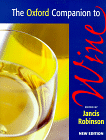 The Oxford
companion to wine by Jancis Robinson. Oxford
University Press, 1994 (Second Edition released in 1999) The Oxford
companion to wine by Jancis Robinson. Oxford
University Press, 1994 (Second Edition released in 1999)The ultimate wine reference book. Editor Jancis Robinson has called on a large team of some of the most knowledgable wine experts from around the globe to produce over 3000 alphabetically arranged entries covering all manner of wine-related topics. These entries are nicely laid out in a substantial (and weighty) book, which is nicely illustrated by a mixture of line drawings, black and white photographs and a few colour plates. Comprehensive and scholarly, yet at the same time readable enough for leisurely browsing. This is a compulsory purchase for anyone who has a serious interest in wine. The big question for those who own a copy of the first edition is whether it is worth splashing out on the newly released second edition, which has been substantially revised. £40. Buy this book from amazon.co.uk 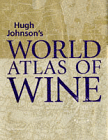 Hugh Johnson's World Atlas of Wine
Mitchell Beazley, London, Fourth Edition, 1994 Hugh Johnson's World Atlas of Wine
Mitchell Beazley, London, Fourth Edition, 1994The fourth edition of a classic, first published in 1971. The book begins by giving some perspective, tracing the history of wine and following through with chapters on the vine, designing a vineyard, terroir, grape varieties, weather, making wine, wine tasting and serving wine. The rest (and great majority) of the book is concerned with putting wine firmly in its geographical context, largely by means of maps of all the main wine regions across the globe (and many of the minor ones too). Superbly designed and conceived, nicely illustrated and beautifully written, it is hard to overestimate how significant an achievement this book is. Hugh Johnson may have been around for ever, but his writing comes across as intelligent and fresh, and his perspective combines a respect for tradition with a balanced acceptance of modern trends and developments. At his best when dealing with potentially controversial issues, he always seems to give a fair and accurate precis of the issues involved. Although I've classed this book as a reference work, it makes pleasurable browsing, and is another 'must buy' for any self-respecting wine nut. £30. Buy this book from amazon.co.uk Oz Clarke's wine atlas Little,
Brown and Company (Websters International Publishers, London), 1995 (ISBN 0 316 14697 8). Another atlas-format work, this time by the most influential voice of the Australian wine scene, James Halliday. This time there is less focus on the maps (which are rather simple), and more on the different producers (within each region there is a review of the leading domaines). Nicely illustrated and a useful resource for anyone planning a trip to antipodean wine country.
|
||||||
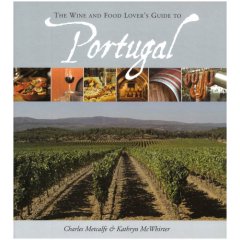

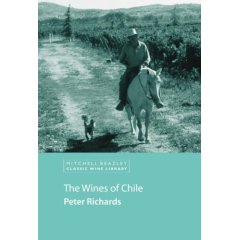 The
wines of
The
wines of 
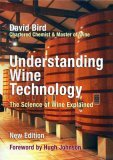
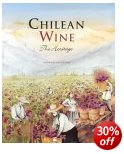
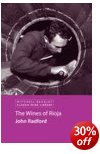 John
Radford’s new book on The Wines of Rioja is a welcome addition to
the Mitchell Beazley Classic Wine Library. Like the other books in
this series, it’s a bit of a writing-by-numbers book in its
conception: I guess there’s not a lot of room for individual flair
in this sort of project. We’ve got an introduction, a historical
perspective, a view of the current scene, a short section on
viticulture, a future perspective and then some opinion. But the bulk
of the book is a directory, giving a brief overview of each of the
significant Rioja producers. No illustrations, save a solitary map at
the beginning. John’s writing style is quite approachable and nicely
informal, and he’s prepared to voice an opinion where it’s called
for.
John
Radford’s new book on The Wines of Rioja is a welcome addition to
the Mitchell Beazley Classic Wine Library. Like the other books in
this series, it’s a bit of a writing-by-numbers book in its
conception: I guess there’s not a lot of room for individual flair
in this sort of project. We’ve got an introduction, a historical
perspective, a view of the current scene, a short section on
viticulture, a future perspective and then some opinion. But the bulk
of the book is a directory, giving a brief overview of each of the
significant Rioja producers. No illustrations, save a solitary map at
the beginning. John’s writing style is quite approachable and nicely
informal, and he’s prepared to voice an opinion where it’s called
for. 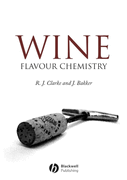 This
isn’t you average wine book. It’s for those with a fairly serious
interest in wine science, but if this description fits you, you might
find this book a valuable addition to your library. The authors
aren’t wine specialists, but rather flavour chemists who have turned
their attention to wine.
This
isn’t you average wine book. It’s for those with a fairly serious
interest in wine science, but if this description fits you, you might
find this book a valuable addition to your library. The authors
aren’t wine specialists, but rather flavour chemists who have turned
their attention to wine. 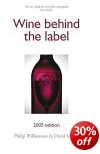 It’s the third edition of
Wine Behind the Label, and
it gets a new look. Inside, the content is similar, but updated, and
there’s a lot more of it (the book weighs in at over 900 pages).
It’s a global guide to the world’s leading wine producers, with a
paragraph of descriptive text, contact details, importer details and a
list of the wines produced. Specific vintages aren’t mentioned, but
a star system is used to indicate general quality. For those familiar
with the first two editions, the style and layout is pretty much
similar.
It’s the third edition of
Wine Behind the Label, and
it gets a new look. Inside, the content is similar, but updated, and
there’s a lot more of it (the book weighs in at over 900 pages).
It’s a global guide to the world’s leading wine producers, with a
paragraph of descriptive text, contact details, importer details and a
list of the wines produced. Specific vintages aren’t mentioned, but
a star system is used to indicate general quality. For those familiar
with the first two editions, the style and layout is pretty much
similar.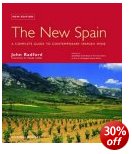 The
The




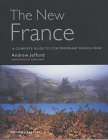

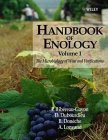
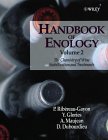 Handbook
of Enology Vol 2: The Chemistry of Wine Stabilization and
Treatments By P. Ribereau Gayon, D.
Dubourdieu, A. Lonvaud, B. Doneche
Handbook
of Enology Vol 2: The Chemistry of Wine Stabilization and
Treatments By P. Ribereau Gayon, D.
Dubourdieu, A. Lonvaud, B. Doneche 

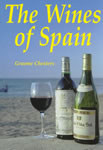


 If
you want evidence of how much the world of wine has changed over the
last decade, then compare this long-awaited update of Tom Stevenson's
Sotheby's Wine Encyclopedia with the second edition, published 10
years ago in
1991. 480 pages have become 600, and the text has been largely
rewritten. Such is the pace of change in the world of wine that the
third edition (1997) now seems antediluvian, and no doubt
in three or four years' time, this new version will be just as badly in
need of an update—so it looks like Tom will be gainfully employed
for many years yet. Overall, this Encyclopedia is a remarkable
achievement. Fully
illustrated with plenty of maps and photographs, there's a wealth of
information here that successfully bridges the gap between the needs
of the hardened geek and the enquiring beginner. The first 50 pages provide fairly standard reference
material on subjects such as how wine is made, tasting techniques and
grape varieties. The rest of the book takes us on a tour of the wine
regions of the world. The prime focus is on appellations: after a
general introduction, each region and subregion is described in detail,
with a selection of the leading producers highlighted. Producer
profiles are included for some of the key regions; to me, this is one
of the most useful features, and I wish there could have been more.
Each section includes a selection of the author's favourite wines from
that region, adding a personal voice that doesn't interfere with
attempted objectivity elsewhere. Throughout, Stevenson writes
entertainingly and clearly; he's not afraid of expressing strong
opinions where necessary, but when he does, they always seem to be
defensible. Take, for instance, his views on how German wines can
improve their tarnished image, and his suggested way forward for the English wine
industry. I've spent the last few days browsing effortlessly through
this book, and although I've only really scratched the surface, it has
already become an
indispensable reference source. Criticisms? I imagine a lot of
interesting material never made it into the final 600 pages, and my
only regret is that we don't have access to this. I'd be particularly
keen on more producer profiles. As an aside, the almost-simultaneous
publication of the latest edition of
If
you want evidence of how much the world of wine has changed over the
last decade, then compare this long-awaited update of Tom Stevenson's
Sotheby's Wine Encyclopedia with the second edition, published 10
years ago in
1991. 480 pages have become 600, and the text has been largely
rewritten. Such is the pace of change in the world of wine that the
third edition (1997) now seems antediluvian, and no doubt
in three or four years' time, this new version will be just as badly in
need of an update—so it looks like Tom will be gainfully employed
for many years yet. Overall, this Encyclopedia is a remarkable
achievement. Fully
illustrated with plenty of maps and photographs, there's a wealth of
information here that successfully bridges the gap between the needs
of the hardened geek and the enquiring beginner. The first 50 pages provide fairly standard reference
material on subjects such as how wine is made, tasting techniques and
grape varieties. The rest of the book takes us on a tour of the wine
regions of the world. The prime focus is on appellations: after a
general introduction, each region and subregion is described in detail,
with a selection of the leading producers highlighted. Producer
profiles are included for some of the key regions; to me, this is one
of the most useful features, and I wish there could have been more.
Each section includes a selection of the author's favourite wines from
that region, adding a personal voice that doesn't interfere with
attempted objectivity elsewhere. Throughout, Stevenson writes
entertainingly and clearly; he's not afraid of expressing strong
opinions where necessary, but when he does, they always seem to be
defensible. Take, for instance, his views on how German wines can
improve their tarnished image, and his suggested way forward for the English wine
industry. I've spent the last few days browsing effortlessly through
this book, and although I've only really scratched the surface, it has
already become an
indispensable reference source. Criticisms? I imagine a lot of
interesting material never made it into the final 600 pages, and my
only regret is that we don't have access to this. I'd be particularly
keen on more producer profiles. As an aside, the almost-simultaneous
publication of the latest edition of 


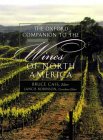
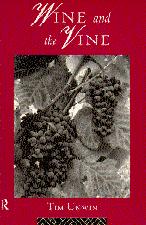 Wine and the vine: an historical geography of viticulture and
the wine trade by Tim Unwin.
Routledge, London, 1996 (paperback edition, original edn. 1991) (ISBN 0 415 14416 7)
Wine and the vine: an historical geography of viticulture and
the wine trade by Tim Unwin.
Routledge, London, 1996 (paperback edition, original edn. 1991) (ISBN 0 415 14416 7)